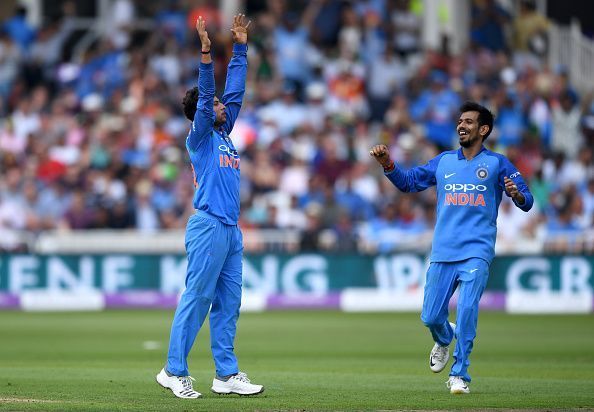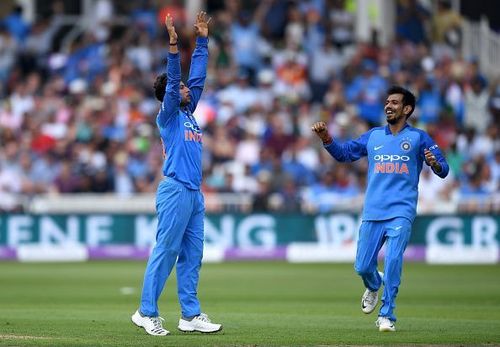
How long before the wrist spinners clout over the batsmen gets over in limited overs cricket?

In the last 3-4 years, the cricketing world has seen a surge in the demand of wrist spinners in almost all the teams across the world, be it ODIs, T20Is or the different T20 leagues. While creating squads, the selectors/coaches/team owners are putting the requirement of wrist spinners at the top.
Increasingly, the limited over teams are now playing wrist spinners in their playing XI, some teams, in fact, going ahead with two wrist spinners at the same time. The primary example being Team India.
Till the Champions Trophy 2017, India didn't regularly feature wrist spinners in their playing XI, be it ODIs or T20Is, though Amit Mishra used to play sporadically. But since then, India have consistently played both Kuldeep and Chahal in ODIs as well as T20Is. The question arises: what has led to the change in the thought process of the captains and coaches?
Well, the answer is not as simple as some people think it to be. Most people consider the ability to take the ball away from the right-handed batsmen as the biggest reason why batsmen are not being able to play the wrist spinners. However, the reason is different.
The wrist spinners in today's era don't spin the ball viciously, with very less turn being extracted from the pitch. If the ball is turning consistently or not turning, then it becomes easier for the batsmen to adjust to the line and turn of the ball, but as the case is, the turn is very less, making it very difficult for the batsmen to predict how much the ball will turn, and therefore the uncertainty in playing them properly.
Crucially the batsmen, especially the right handers have not been able to outguess the bowler. In most cases, the first ball to the right hander when they are new to the crease is a googly, which comes in after pitching, and many times batsmen have been guilty of not reading the ball and therefore giving away their wicket.
The ratio of right-hand batsmen getting dismissed to a googly is much more than that of left-handers being dismissed to the leg-spinning ball.
Another important thing, the batsmen are not watching the bowlers hand properly. It is like see and hit mentality. If the ball is in their arc, which means slightly full, they go ahead with a full heaved shot and not lining themselves according to the turn, and thereby losing their wicket.
The wrist spinners have three basic varieties in their deliveries - the one that turns away, i.e. the legspinner, the one that goes straight on and the one that comes in, i.e. the googly. The grip and the release of the ball for all these deliveries are very different, and any batsman who can spot these differences during the bowling stride of the bowler, can easily predict which way the ball is going to turn after pitching, thereby making the shot selection easier.
The time is not far when the batsman will be able to make these adjustments to counter the increasing effectiveness of the wrist spinners, because the batsmen need to upskill themselves to be able to be more effective against the wrist spinners.